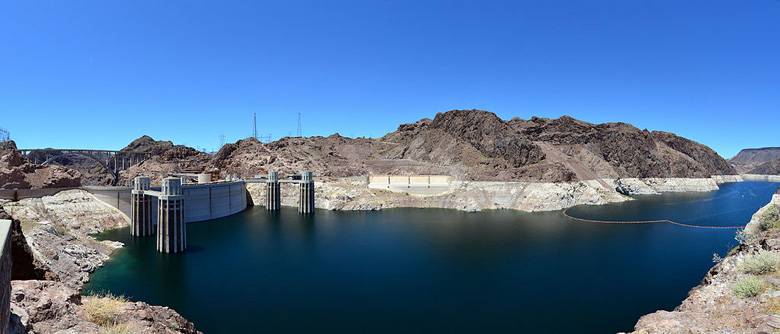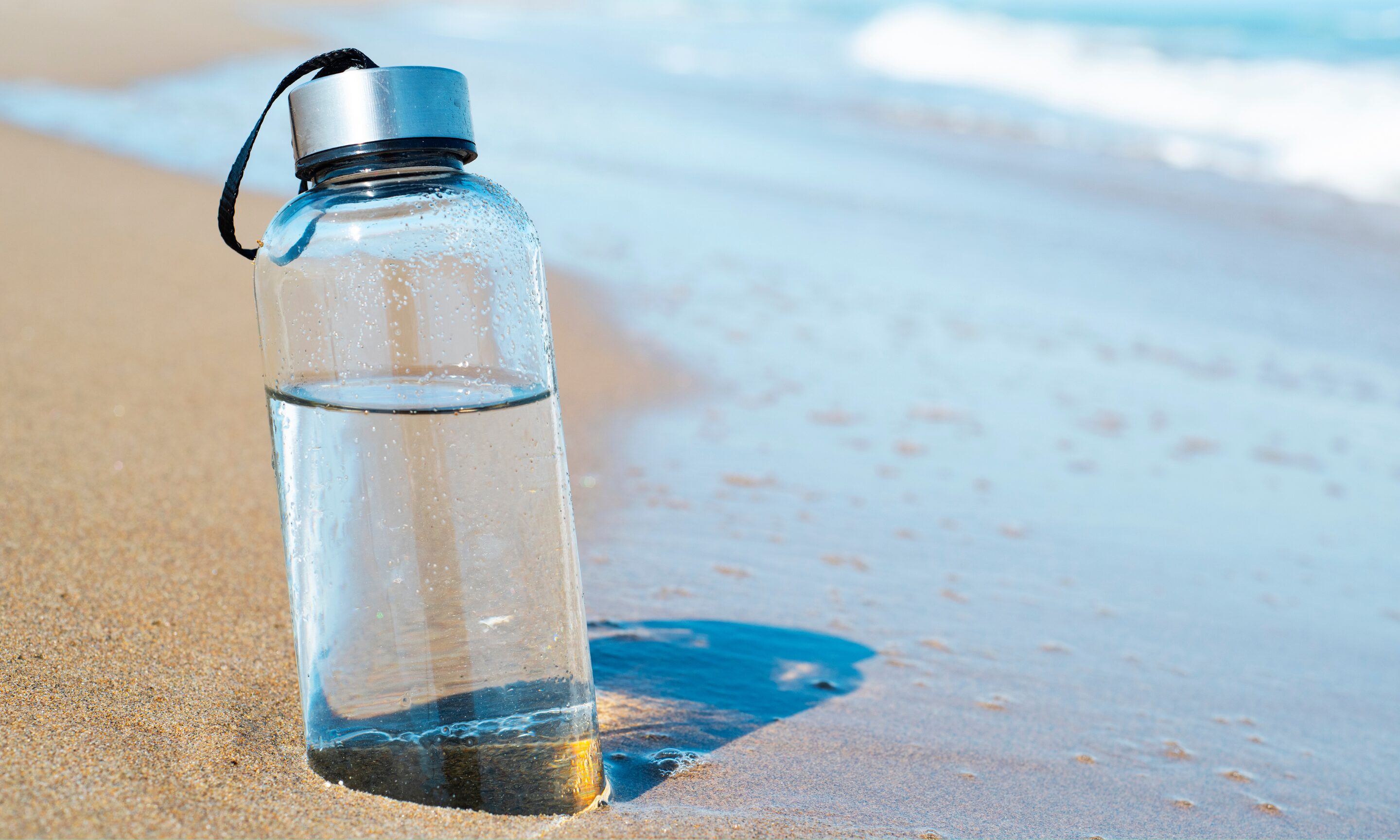
Throwback Thursday: The Hoover Dam and Lake Mead

By Katlyn Manka
Planet Forward Intern/Marymount University
Construction completed 80 years ago Friday on what was then the tallest dam and largest hydroelectric plant in the world. Finished Oct. 9, 1935, and transmitting electricity since 1936, the Hoover Dam is the hydroelectric power supply of Las Vegas, Los Angeles and other large cities of the southwestern United States. From 1947 through 2008 the dam produced a yearly average of 4.2 billion kilowatt-hours, serving 1.3 million people.
During construction, the Hoover Dam caused extreme population growth as Boulder City, Nevada, was erected in 1931 as a residential community for the 5,000 workers brought to the area. Casino gambling also became legal in Las Vegas this same year. The population spike and tourism caused by the building of the dam was crucial for Las Vegas to become the city it is today.
Despite being one of the most groundbreaking innovations of its time, the Hoover Dam has since been left behind by progress, falling behind much larger facilities of its kind today. The largest hydroelectric dam in the United States is currently Washington state’s Grand Coulee Dam which went through construction during many of the same years as the Hoover Dam but was not completed until 1942, a full 7 years after its predecessor.
Although the Hoover Dam is most famous as a hydroelectric plant, it was also built to conserve and distribute water to the arid southwestern United States. Lake Mead, the reservoir the dam created, is still the largest man-made reservoir in the United States. The water it supplies is vital to the region.
Unfortunately, the Colorado River drought has taken its toll in recent years. Even with the water level of Lake Mead at a record low, locals are still pumping water out of the reservoir as workers recently pulled a third intake plug to draw drinking water for Las Vegas citizens. In an Associated Press article, officials claim that this third pipeline won’t draw more water from the lake. Rather, it will better distribute the same amount of water that is currently being used.
With the water level of the lake it created at a record low this year, the Hoover Dam’s future is not looking bright. The Colorado River is shrinking and, according to a 2009 study, Lake Mead faces 50% chance of drying up in the next 20 years. By 2050, it’s quite possible that the great Hoover Dam may only hold back a feeble trickle.
(Image at top: A panoramic view of the Hoover Dam and Lake Mead from the Arizona side. The stark white banks clearly show where the waterline used to be along the lake. Photo by Kuczora/Wikimedia Commons)























